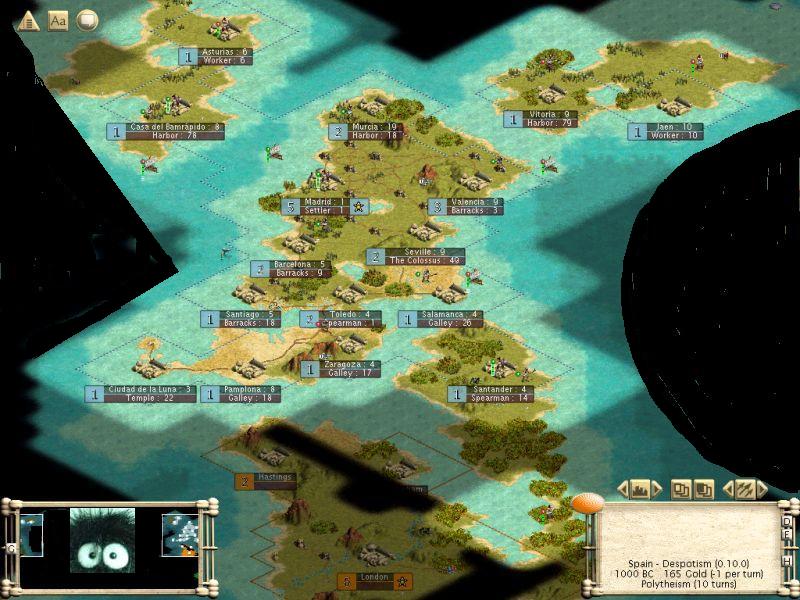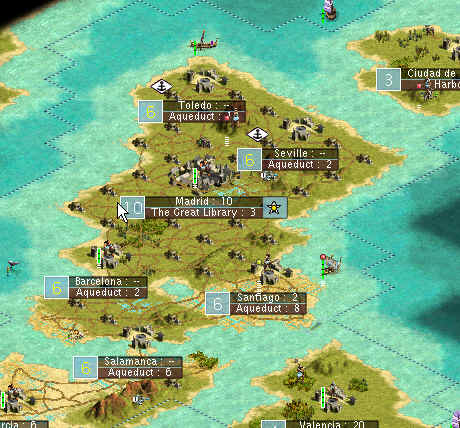GOTM30 Spain-PTW-Open
First real attempt at a GOTM and I am enjoying it very much. The map presents some interesting challenges.
Appreciate the work, ainwood and others of GOTM staff. Thanks for the opportunity.
The Game is afoot:
Moved the settler to the SW and settled on the coast with the feedlot in first tier. Built a warrior for exploration and then started a settler.
Accordingly, after the settler and a couple more warriors, Madrid built its granary, then churned out settlers for the first hundred or so turns.
The warriors quickly determined the shape of the island, which determined the overall strategy for the early game: no military, emphasize commercial improvements, then cultural (scientific), seek contact aggressively, settle the island quickly, build boats and get offshore.
By 1050BC the island was completely settled and Spain was sailing the seas looking for islands and contacts.
Every town was on the coast and as soon as MM was learned every town except Barcelona built a galley for exploration and settler ferrying.
Settlement history
T1 Madrid (3950)
T21 Barcelona (3000BC)
T45 Seville (1990BC)
T49 Toledo (1830BC)
T56 Santaigo (1625BC)
T62 Salamanca (1475BC)
T69 Murcia (1300BC)
T79 Valencia (1050BC)
The first off-island settlement was Ciudad de la Luna on the island to the NE in 190BC (T113)
190BC Unit Count
1 settler
13 workers
13 warriors
3 spears
2 swords
2 galleys
190BC Science Advisor
The Realm of Spain circa 190BC
City placement on the home island was guided by a 4-8-12 placement which maximized use of available land and sea and which actually worked nicely on the off-island settlement locations to the West and NorthEast.
Barcelona was the production leader at this stage and concentrated on the two critical wonders: the Colussus (800BC) and the Great Lighthouse (250BC). The Colussus was a significant commerce boost and also inaugurated the Golden Age (in despotism) which greatly shortened the research time to Map Making and accelerated the building of the Great Lighthouse.
Contact with England came almost as soon as the warrior reached the south and Spain began a program of trading technology for technology and gold that served her well throughout her history. The goals were to have the other civilizations fund research, maintain control of the technology pace and stay ahead militarily through quality, not quantity. The long term goal was either Diplomatic or Space Victory. (I eliminated Domination and Conquest and planned for wars only to capture resources or trade goods, or, should it become necessary, eliminate a rival's Space Ship).
Spain entered the Middle Ages at some point (notes lost)between 310BC(T113) and 340AD (T150). T150 marked the end of the native expansion phase as both islands to northeast and west and a third island to the west had been colonised. At this point we had contact with all other civilizations and the exchange of technology for cash and technology was in full spate.
Spain Western Islands 340AD
Spain Home Island 340AD
Spain Eastern Island
Relationship with England circa 340AD
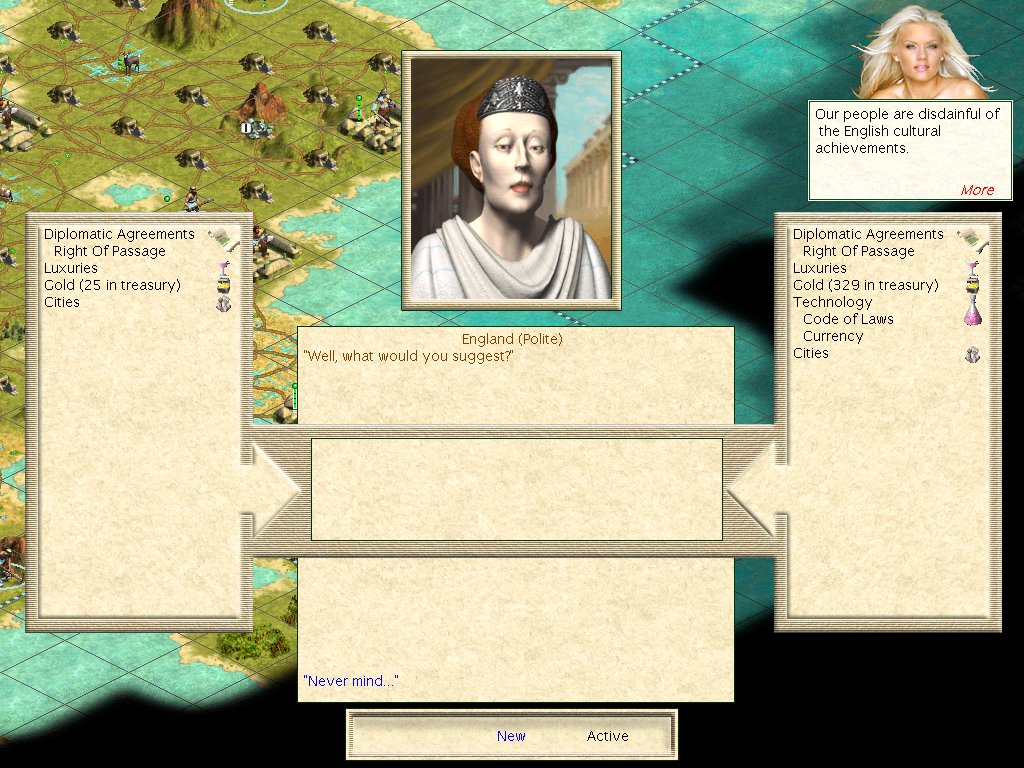
The commercial and religious traits established our research path. Presented with a fork in the tree Spain chose to research towards those advances that complemented those traits. The result was technical parity with the leader, and a one or two step advantage on the others, with one notable exception who lagged badly behind. This position created tremendous brokerage opportunities throughout the Ancient and Middle Ages, as for example, Spain could trade Polytheism to the leader for a military technology, and cash, then turn around and sell one or the other to the others for cash and another military tech. In most cities (the exceptions being the barracks towns of Santiago, Toledo and Salamanca) libraries came before temples and harbors and marketplaces soon after. The scientific and cultural boost of libraries supported the research pace and cultural dominance, and the economic improvements and brokerage paid for the research. The settlement plan minimized the effects of corruption on the home island and courthouses were needed only early in the outlying colonies and on the home island much later in the game when the last shield and gold coin had much higher marginal value (the multiplier effects of banks in the Middle Ages and factories later).
There were no wars fought by the Spanish during this phase, as there was no strategic reason for belligerence. The first war came early in the Middle Ages to consolidate control of the westernmost island (two other nations had outposts there) and the second to establish a foothold on the English island and to seize some luxury resources needed to pacify an increasingly restive population as the home island cities grew towards 12.

 Sam.
Sam.
 Even if you couldn't face playing on our team in sgotm1.
Even if you couldn't face playing on our team in sgotm1.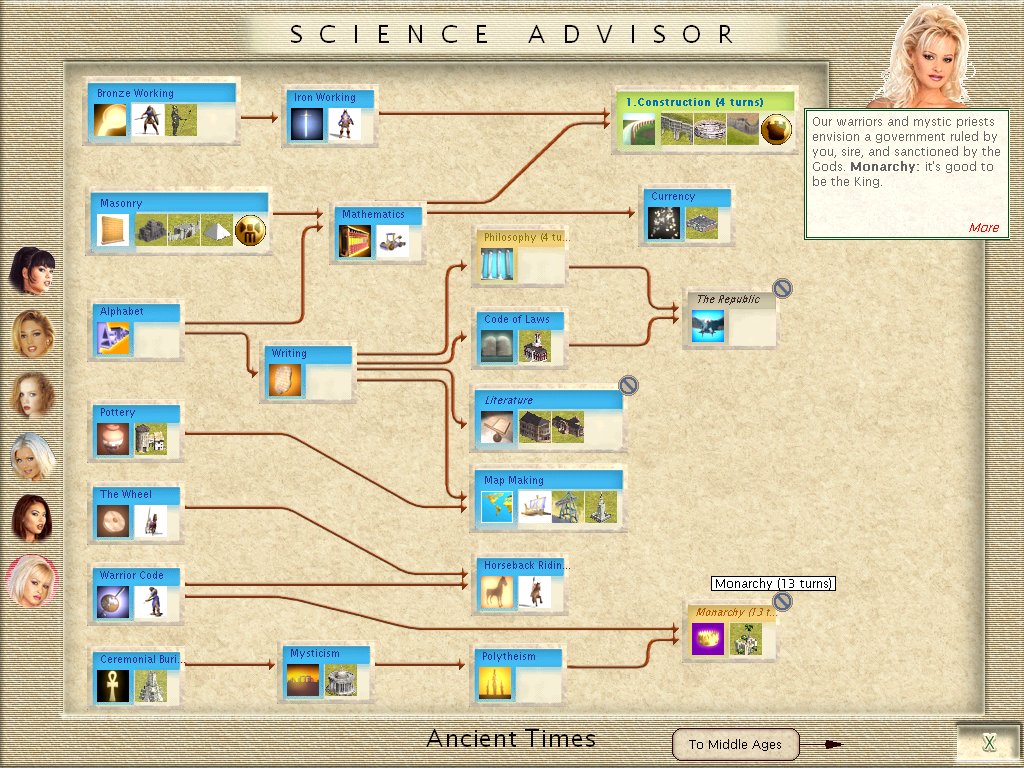
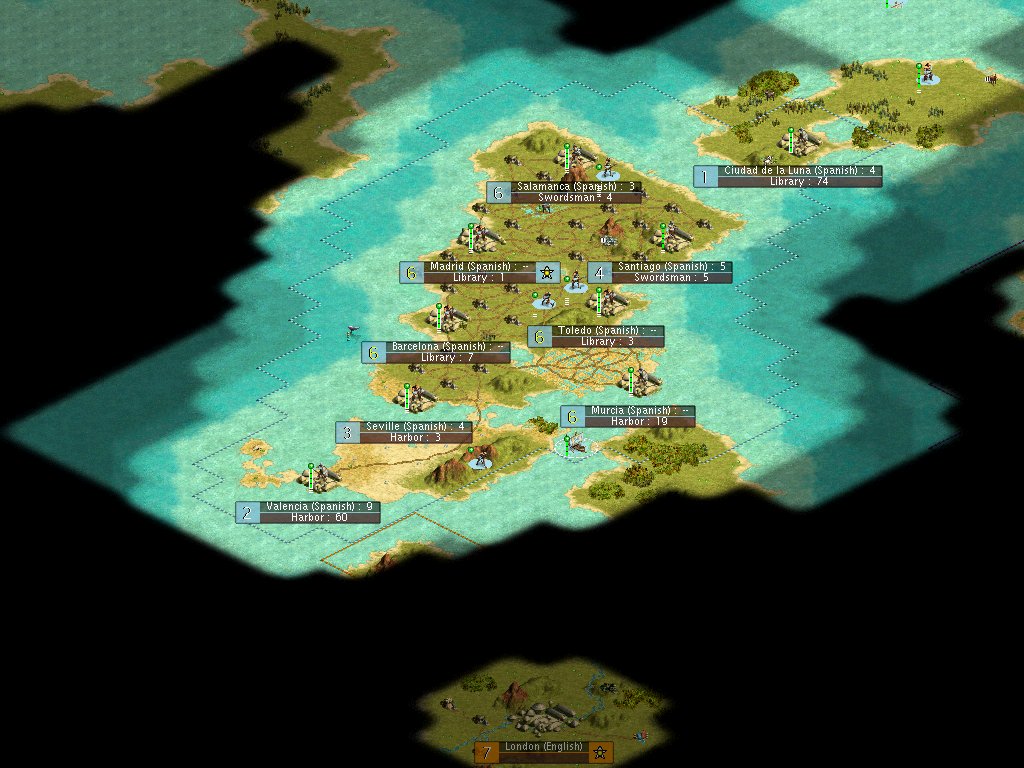
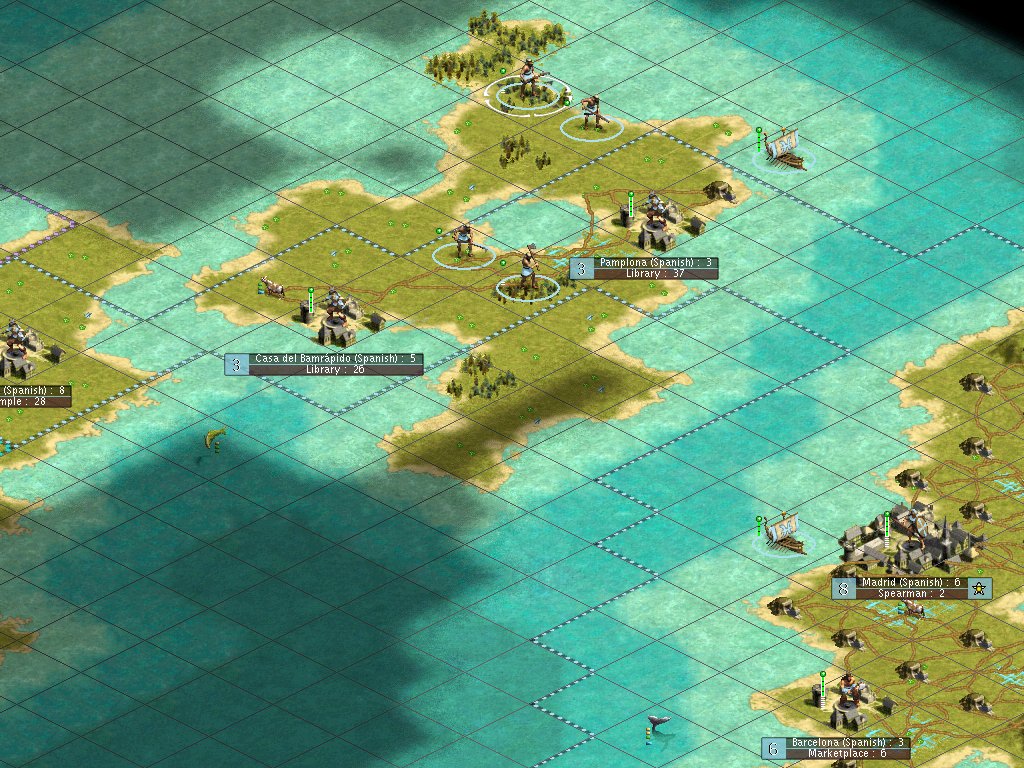
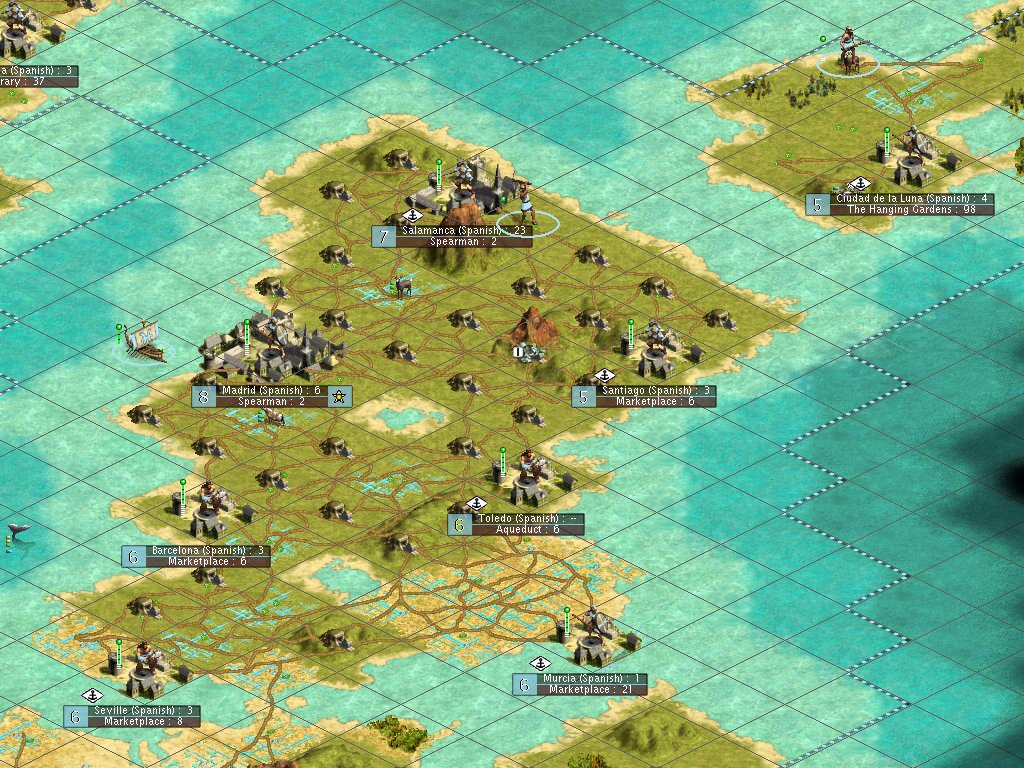
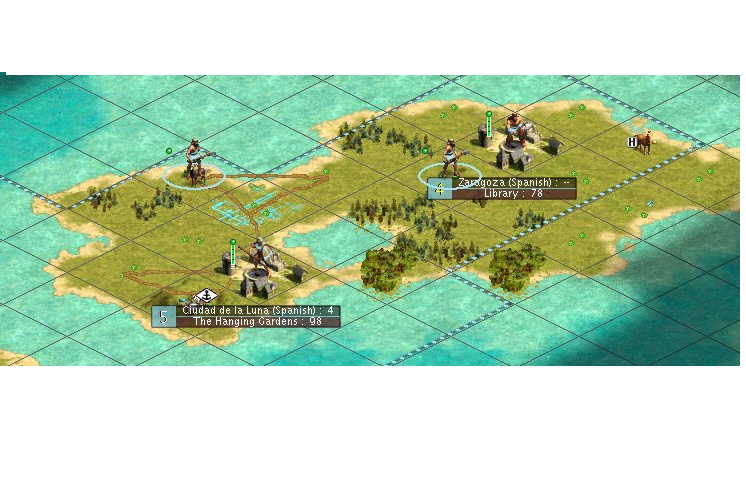

 .
.